Surgical Considerations of Intractable Mesial Temporal Lobe Epilepsy
Abstract
:1. Introduction
2. Surgery of Temporal Lobe Epilepsy
2.1. Temporal Lobectomy
2.2. Cortico-Amygdalohippocampectomy (CAH)
2.3. Cortico-Amygdalectomy (CA)
2.4. Selective Amygdalohippocampectomy (SAH)
3. Surgical Technique of SAH
4. Key Hole Approach in SAH
5. Percutaneous Ablation Approaches in SAH
6. Patient Outcomes from SAH
7. Conclusions
Conflicts of Interest
References
- Téllez-Zenteno, J.F.; Hernández-Ronquillo, L. A Review of the Epidemiology of Temporal Lobe Epilepsy. Epilepsy Res. Treat. 2012, 630853. [Google Scholar] [CrossRef] [PubMed]
- Semah, F.; Picot, M.C.; Adam, C.; Broglin, D.; Arzimanoglou, A.; Bazin, B.; Cavalcanti, D.; Baulac, M. Is the underlying cause of epilepsy a major prognostic factor for recurrence? Neurology 1998, 51, 1256–1262. [Google Scholar] [CrossRef] [PubMed]
- Hauser, W.A.; Annegers, J.F.; Kurland, L.T. Prevalence of epilepsy in Rochester, Minnesota: 1940–1980. Epilepsia 1991, 32, 429–445. [Google Scholar] [CrossRef] [PubMed]
- Papez, J.W. A proposed mechanism of emotion. Arch. Neurol. Psychiatry 1937, 38, 725–743. [Google Scholar] [CrossRef]
- Duvernoy, H.M.; Cattin, F.; Risold, P.Y. The Human Hippocampus Functional Anatomy, Vascularization and Serial Sections with MRI; Springer: New York, NY, USA, 2013. [Google Scholar]
- Wiebe, S.; Blume, W.T.; Girvin, J.P.; Eliasziw, M. A randomized, controlled trial of surgery for temporal-lobe epilepsy. N. Engl. J. Med. 2001, 345, 311–318. [Google Scholar] [CrossRef] [PubMed]
- Tanriverdi, T.; Ajlan, A.; Poulin, N.; Olivier, A. Morbidity in epilepsy surgery: An experience based on based on 2449 epilepsy surgery procedures from a single institution. J. Neurosurg. 2009, 110, 1111–1123. [Google Scholar] [CrossRef] [PubMed]
- Engel, J., Jr.; Wiebe, S.; French, J.; Sperling, M.; Williamson, P.; Spencer, D.; Gumnit, R.; Zahn, C.; Westbrook, E.; Enos, B. Practice parameter: Temporal lobe and localized neocortical resections for epilepsy: Report of the Quality Standards Subcommittee of the American Academy of Neurology, in association with the American Epilepsy Society and the American Association of Neurological Surgeons. Neurology 2003, 60, 538–547. [Google Scholar]
- Kwan, P.; Arzimanoglou, A.; Berg, A.T.; Brodie, M.J.; Allen Hauser, W.; Mathern, G.; Moshé, S.L.; Perucca, E.; Wiebe, S.; French, J. Definition of drug resistant epilepsy: Consensus proposal by the ad hoc Task Force of the ILAE Commission on Therapeutic Strategies. Epilepsia 2010, 51, 1069–1077. [Google Scholar] [CrossRef] [PubMed]
- Kwon, C.S.; Neal, J.; Telléz-Zenteno, J.; Metcalfe, A.; Fitzgerald, K.; Hernandez-Ronquillo, L.; Hader, W.; Wiebe, S.; Jetté, N.; CASES Investigators. Resective focal epilepsy surgery—Has selection of candidates changed? A systematic review. Epilepsy Res. 2016, 122, 37–43. [Google Scholar] [CrossRef] [PubMed]
- Wieser, H.G.; ILAE Commission on Neurosurgery of Epilepsy. Mesial temporal lobe epilepsy with hippocampal sclerosis. Epilepsia 2004, 45, 695–714. [Google Scholar] [PubMed]
- O’Brien, T.J.; Kilpatrick, C.; Murrie, V.; Vogrin, S.; Morris, K.; Cook, M.J. Temporal lobe epilepsy caused by mesial temporal sclerosis and temporal neocortical lesions. A clinical and electroencephalographic study of 46 pathologically proven cases. Brain 1996, 119, 2133–2141. [Google Scholar] [CrossRef] [PubMed]
- Burgerman, R.S.; Sperling, M.R.; French, J.A.; Saykin, A.J.; O’Connor, M.J. Comparison of mesial versus neocortical onset temporal lobe seizures: Neurodiagnostic findings and surgical outcome. Epilepsia 1995, 36, 662–670. [Google Scholar] [CrossRef] [PubMed]
- Olivier, A.; Gloor, P.; Andermann, F.; Quesney, L.F. The place of stereotactic depth electrode recording in epilepsy. Appl. Neurophysiol. 1985, 48, 395–399. [Google Scholar] [CrossRef] [PubMed]
- Berkovic, S.F.; Andermann, F.; Olivier, A.; Ethier, R.; Melanson, D.; Robitaille, Y.; Kuzniecky, R.; Peters, T.; Feindel, W. Hippocampal sclerosis in temporal lobe epilepsy demonstrated by magnetic resonance imaging. Ann. Neurol. 1991, 29, 175–182. [Google Scholar] [CrossRef] [PubMed]
- Cendes, F. Febrile seizures and mesial temporal sclerosis. Curr. Opin. Neurol. 2004, 17, 161–164. [Google Scholar] [CrossRef] [PubMed]
- Schramm, J.; Kral, T.; Grunwald, T.; Blumcke, I. Surgical treatment for neocortical temporal lobe epilepsy: Clinical and surgical aspects and seizure outcome. J. Neurosurg. 2001, 94, 33–42. [Google Scholar] [CrossRef] [PubMed]
- Pacia, S.V.; Devinsky, O.; Perrine, K.; Ravdin, L.; Luciano, D.; Vazquez, B.; Doyle, W.K. Clinical features of neocortical temporal lobe epilepsy. Ann. Neurol. 1996, 40, 724–730. [Google Scholar] [CrossRef] [PubMed]
- Maillard, L.; Vignal, J.P.; Gavaret, M.; Guye, M.; Biraben, A.; McGonigal, A.; Chauvel, P.; Bartolomei, F. Semiologic and electrophysiologic correlations in temporal lobe seizure subtypes. Epilepsia 2004, 45, 1590–1599. [Google Scholar] [CrossRef] [PubMed]
- Adam, C.; Clemenceau, S.; Semah, F.; Hasboun, D.; Samson, S.; Aboujaoude, N.; Samson, Y.; Baulac, M. Variability of presentation in medial temporal lobe epilepsy: A study of 30 operated cases. Acta. Neurol. Scand. 1996, 94, 1–11. [Google Scholar] [CrossRef] [PubMed]
- Pfander, M.; Arnold, S.; Henkel, A.; Weil, S.; Werhahn, K.J.; Eisensehr, I.; Winkler, P.A.; Noachtar, S. Clinical features and EEG findings differentiating mesial from neocortical temporal lobe epilepsy. Epileptic Disord. 2002, 4, 189–195. [Google Scholar] [PubMed]
- Foldvary, N.; Lee, N.; Thwaites, G.; Mascha, E.; Hammel, J.; Kim, H.; Friedman, A.H.; Radtke, R.A. Clinical and electrographic manifestations of lesional neocortical temporal lobe epilepsy. Neurology 1997, 49, 757–763. [Google Scholar] [CrossRef] [PubMed]
- So, N.; Gloor, P.; Quesney, L.F.; Jones-Gotman, M.; Olivier, A.; Andermann, F. Depth electrode investigations in patients with bitemporal epileptiform abnormalities. Ann. Neurol. 1989, 25, 423–431. [Google Scholar] [CrossRef] [PubMed]
- Techniques in Epilepsy Surgery: The MNI Approach; Olivier, A.; Boling, W.; Tanriverdi, T. (Eds.) Cambridge University Press: New York, NY, USA, 2012. [Google Scholar]
- Spencer, D.D.; Spencer, S.S.; Mattson, R.H.; Williamson, P.D.; Novelly, R.A. Access to the posterior medial temporal lobe structures in the surgical treatment of temporal lobe epilepsy. Neurosurgery 1984, 15, 667–671. [Google Scholar] [CrossRef] [PubMed]
- Olivier, A. Temporal resections in the surgical treatment of epilepsy. Epilepsy Res. Suppl. 1992, 5, 175–188. [Google Scholar] [PubMed]
- Silbergeld, D.L.; Ojemann, G.A. The tailored temporal lobectomy. Neurosurg. Clin. N. Am. 1993, 4, 273–281. [Google Scholar] [PubMed]
- Kim, H.I.; Olivier, A.; Jones-Gotman, M.; Primrose, D.; Andermann, F. Corticoamygdalectomy in memory-impaired patients. Stereotact. Funct. Neurosurg. 1992, 58, 162–167. [Google Scholar] [CrossRef] [PubMed]
- Boling, W.; Longoni, N.; Palade, A.; Moran, M.; Brick, J. Surgery for temporal lobe epilepsy. W V Med. J. 2006, 102, 18–21. [Google Scholar] [PubMed]
- Jackson, J.H.; Colman, W.S. Case of epilepsy with tasting movements and “dreamy state” with very small patch of softening in the left uncinate gyrus. Brain 1898, 21, 580–590. [Google Scholar] [CrossRef]
- Kaada, B.R. Somatomotor, autonomic and electrographic responses to electrical stimulation of “rhinencephalic” and other structures in primates cat and dog: A study of responses from limbic, subcallosal, orbito-insular, pyriform and temporal cortex, hippocampus, fornix and amygdala. Acta. Physiol. Scand. Suppl. 1951, 83, 1–285. [Google Scholar]
- Vigouroux, R.; Gastaut, H.R.; Badier, M. Provocation des principales manifestations cliniques de l’épilepsie dite temporale par stimulation des structures rhinencéphaliques chez le chat non-anaesthésié. Rev. Neurol. 1951, 85, 505–508. [Google Scholar] [PubMed]
- Gastaut, H.R.; Vigouroux, R.; Naquet, R. Lésions épileptogènes amygdalo-hippocampiques provoquées chez le chat par l’injection de “crème d’albumine”. Rev. Neurol. 1952, 87, 607–609. [Google Scholar] [PubMed]
- Green, J.D.; Shimamoto, T. Hippocampal seizures and their propagation. Arch. Neurol. Psychiatry 1953, 7, 687–702. [Google Scholar] [CrossRef]
- Wieser, H.G.; Ortega, M.; Friedman, A.; Yonekawa, Y. Long-term seizure outcomes following amygdalohippocampectomy. J. Neurosurg. 2003, 98, 751–763. [Google Scholar] [CrossRef] [PubMed]
- Penfield, W.; Jasper, H. Epilepsy and the Functional Anatomy of the Human Brain, 1st ed.; Little Brown: Boston, MA, USA, 1954. [Google Scholar]
- Olivier, A. Relevance of removal of limbic structures in surgery for temporal lobe epilepsy. Can. J. Neurol. Sci. 1991, 18 (Suppl. 4), 628–635. [Google Scholar] [CrossRef] [PubMed]
- Olivier, A. Transcortical selective amygdalohippocampectomy in temporal lobe epilepsy. Can. J. Neurol. Sci. 2000, 27 (Suppl. 1), S68–S76. [Google Scholar] [CrossRef] [PubMed]
- Abosch, A.; Bernasconi, N.; Boling, W.; Jones-Gotman, M.; Poulin, N.; Dubeau, F.; Andermann, F.; Olivier, A. Factors predictive of suboptimal seizure control following selective amygdalohippocampectomy. J. Neurosurg. 2002, 97, 1142–1151. [Google Scholar] [CrossRef] [PubMed]
- Lutz, M.T.; Clusmann, H.; Elger, C.E.; Schramm, J.; Helmstaedter, C. Neuropsychological outcome after selective amygdalohippocampectomy with transsylvian versus transcortical approach: A randomized prospective clinical trial of surgery for temporal lobe epilepsy. Epilepsia 2004, 45, 809–816. [Google Scholar] [CrossRef] [PubMed]
- Niemeyer, P. The Transventricular Amygdala-Hippocampectomy in Temporal Lobe Epilepsy. In Temporal Lobe Epilepsy: A Colloquium Sponsored by the National Institute of Neurological Diseases and Blindness, National Institutes of Health, Bethesda, Maryland, in Cooperation with the International League Against Epilepsy; Baldwin, M., Bailey, P., Eds.; Charles C Thomas: Springfield, IL, USA, 1958; pp. 461–482. [Google Scholar]
- Jones-Gotman, M.; Zatorre, R.J.; Olivier, A.; Andermann, F.; Cendes, F.; Staunton, H.; McMackin, D.; Siegel, A.M.; Wieser, H.G. Learning and retention of words and designs following excision from medial or lateral temporal-lobe structures. Neuropsychologia 1997, 35, 963–973. [Google Scholar] [CrossRef]
- Wieser, H.G. Selective amygdalo-hippocampectomy for temporal lobe epilepsy. Epilepsia 1988, 29 (Suppl. 2), S100–S113. [Google Scholar] [CrossRef] [PubMed]
- Tanriverdi, T.; Olivier, A.; Poulin, N.; Andermann, F.; Dubeau, F. Long-term seizure outcome after mesial temporal lobe epilepsy surgery: Corticalamygdalohippocampectomy versus selective amygdalohippocampectomy. J. Neurosurg. 2008, 108, 517–524. [Google Scholar] [CrossRef] [PubMed]
- JAMA Network. Temporal Lobe Epilepsy: A Colloquium Sponsored by the National Institute of Neurological Diseases and Blindness, National Institutes of Health, Bethesda, Maryland, in Cooperation with the International League Against Epilepsy. JAMA 1959, 169, 1143–1144. [Google Scholar] [CrossRef]
- Scoville, W.; Milner, B. Loss of recent memory after bilateral hippocampal lesions. J. Neurol. Neurosurg. Psych. 1957, 20, 11–21. [Google Scholar] [CrossRef]
- Penfield, W.; Milner, B. Memory deficit produced by bilateral lesions in the hippocampal zone. Arch. Neurol. Psychiatry 1958, 79, 475–497. [Google Scholar] [CrossRef]
- Penfield, W.; Flanigin, H. Surgical therapy of temporal lobe seizures. Arch. Neurol. Psychiatry 1950, 64, 491–500. [Google Scholar] [CrossRef] [PubMed]
- Gastaut, H. So-called “psychomotor” and “temporal” epilepsy. Epilepsia 1953, 2, 59–76. [Google Scholar] [CrossRef]
- Sano, K.; Malamud, N. Clinical significance of sclerosis of the cornu ammonis. Arch. Neurol. Psychiatry 1953, 70, 40–53. [Google Scholar] [CrossRef]
- Hill, D.; Falconer, M.A.; Pampiglione, G.; Liddell, D.W. Discussion on the surgery of temporal lobe epilepsy. Proc. R Soc. Med. 1953, 46, 965–976. [Google Scholar] [PubMed]
- Feindel, W.; Penfield, W. Localization of discharge in temporal lobe automatism. Arch. Neurol. Psychiatry 1954, 72, 605–630. [Google Scholar] [CrossRef]
- Yasargil, M.G.; Teddy, P.J.; Roth, P. Selective amygdalo-hippocampectomy: Operative anatomy and surgical technique. In Advances and Technical Standards in Neurosurgery; Symon, L., Ed.; Springler-Wien: New York, NY, USA, 1985; Volume 12. [Google Scholar]
- Martens, T.; Merkel, M.; Holst, B.; Brückner, K.; Lindenau, M.; Stodieck, S.; Fiehler, J.; Westphal, M.; Heese, O. Vascular events after transsylvian selective amygdalohippocampectomy and impact on epilepsy outcome. Epilepsia 2014, 55, 763–769. [Google Scholar] [CrossRef] [PubMed]
- Yasargil, M.G.; Teddy, P.J.; Roth, P. Selective Amygdalo-Hippocampectomy Operative Anatomy and Surgical Technique. Adv. Tech. Stand. Neurosurg. 1985, 12, 93–123. [Google Scholar] [PubMed]
- Hori, T.; Tabuchi, S.; Kurosaki, M.; Kondo, S.; Takenobu, A.; Watanabe, T. Subtemporal amygdalohippocampectomy for treating medially intractable temporal lobe epilepsy. Neurosurgery 1993, 33, 50–56. [Google Scholar] [PubMed]
- Sugita, K.; Kobayashi, S.; Yokoo, A. Preservation of large bridging veins during brain retraction. Technical note. J. Neurosurg. 1982, 57, 856–858. [Google Scholar] [CrossRef] [PubMed]
- Boling, W. Selective Amygdalohippocampectomy. In Operative Techniques in Epilepsy Surgery, 2nd ed.; Baltuch, G., Cukiert, A., Eds.; Thieme Medical Publishers: New York, NY, USA, 2018. [Google Scholar]
- Boling, W. Minimal Access Keyhole Surgery for Mesial Temporal Lobe Epilepsy. J. Clin. Neurosci. 2010, 17, 1180–1184. [Google Scholar] [CrossRef] [PubMed]
- Little, A.S.; Smith, K.A.; Kirlin, K.; Baxter, L.C.; Chung, S.; Maganti, R.; Treiman, D.M. Modifications to the subtemporal selective amygdalohippocampectomy using a minimal-access technique: Seizure and neuropsychological outcomes. J. Neurosurg. 2009, 111, 1263–12674. [Google Scholar] [CrossRef] [PubMed]
- Kessels, R.P.; Hendriks, M.; Schouten, J.; Van Asselen, M.; Postma, A. Spatial memory deficits in patients after unilateral selective amygdalohippocampectomy. J. Int. Neuropsychol. Soc. 2004, 10, 907–912. [Google Scholar] [CrossRef] [PubMed]
- Gleissner, U.; Helmstaedter, C.; Schramm, J.; Elger, C.E. Memory outcome after selective amygdalohippocampectomy in patients with temporal lobe epilepsy: One-year follow-up. Epilepsia 2004, 45, 960–962. [Google Scholar] [CrossRef] [PubMed]
- Arts, S.; Delye, H.; van Lindert, E.J. Intraoperative and postoperative complications in the surgical treatment of craniosynostosis: Minimally invasive versus open surgical procedures. J. Neurosurg. Pediatr. 2017, 24, 1–7. [Google Scholar] [CrossRef] [PubMed]
- Morcos, M.W.; Jiang, F.; McIntosh, G.; Johnson, M.; Christie, S.; Wai, E.; Ouellet, J.; Bailey, C.; Ahn, H.; Paquet, J.; et al. Predictors of Blood Transfusion in Posterior Lumbar Spinal Fusion: A Canadian Spine Outcome and Research Network Study. Spine 2018, 43, E35–E39. [Google Scholar] [CrossRef] [PubMed]
- Duckworth, E.A.; Vale, F.L. Trephine epilepsy surgery: The inferior temporal gyrus approach. Neurosurgery 2008, 63 (Suppl. 1), ONS156–ONS160. [Google Scholar] [CrossRef]
- Schwab, R.S.; Sweet, W.H.; Mark, V.H.; Kjellberg, R.N.; Ervin, F.R. Treatment of intractable temporal lobe epilepsy by stereotactic amygdala lesions. Trans. Am. Neurol. Assoc. 1965, 90, 12–19. [Google Scholar] [PubMed]
- Narabayashi, H.; Mizutani, T. Epileptic seizures and the stereotaxic amygdalotomy. Confin. Neurol. 1970, 32, 289–297. [Google Scholar] [CrossRef] [PubMed]
- Flanigin, H.F.; Nashold, B.S. Stereotactic lesions of the amygdala and hippocampus in epilepsy. Acta Neurochir. 1976, 23, 235–239. [Google Scholar]
- Heimberger, R.F.; Small, I.F.; Milstein, V.; Moore, D. Stereotactic amygdalotomy for convulsive and behavioural disorders. Appl. Neurophysiol. 1978, 41, 43–45. [Google Scholar]
- Vaernet, K. Stereotaxic amygdalotomy in temporal lobe epilepsy. Confin. Neurol. 1972, 34, 176–180. [Google Scholar] [CrossRef] [PubMed]
- Mempel, E.; Witkiewicz, B.; Stadnicki, R.; Luczywek, E.; Kuciński, L.; Pawłowski, G.; Nowak, J. The effect of medial amygdalotomy and anterior hippocampotomy on behavior and seizures in epileptic patients. Acta Neurochir. 1980, 30, 161–167. [Google Scholar]
- Nadvornik, P.; Sramka, M.; Gajdosova, D.; Kokavec, M. Longitudinal hippocampectomy. Confin. Neurol. 1975, 37, 244–248. [Google Scholar] [CrossRef]
- Parrent AG and Blume, W. Stereotactic Amygdalohippocampotomy for the Treatment of Medial Temporal Lobe Epilepsy. Epilepsia 1999, 40, 1408–1416. [Google Scholar] [CrossRef]
- Le Bihan, D.; Delannoy, J.; Levin, R.L. Temperature mapping with MR imaging of molecular diffusion: Application to hyperthermia. Radiology 1989, 171, 853–857. [Google Scholar] [CrossRef] [PubMed]
- Bertsch, F.; Mattner, J.; Stehling, M.K.; Müller-Lisse, U.; Peller, M.; Loeffler, R.; Weber, J.; Messmer, K.; Wilmanns, W.; Issels, R.; et al. Non-invasive temperature mapping using MRI: comparison of two methods based on based on chemical shift and T1-relaxation. Magn. Reson. Imaging 1998, 16, 393–404. [Google Scholar] [CrossRef]
- Jermakowicz, W.J.; Kanner, A.M.; Sur, S.; Bermudez, C.; D’Haese, P.F.; Kolcun, J.P.G.; Cajigas, I.; Li, R.; Millan, C.; Ribot, R.; et al. Laser thermal ablation for mesiotemporal epilepsy: Analysis of ablation volumes and trajectories. Epilepsia 2017, 58, 801–810. [Google Scholar] [CrossRef] [PubMed]
- Kang, J.Y.; Wu, C.; Tracy, J.; Lorenzo, M.; Evans, J.; Nei, M.; Skidmore, C.; Mintzer, S.; Sharan, A.D.; Sperling, M.R. Laser interstitial thermal therapy for medically intractable mesial temporal lobe epilepsy. Epilepsia 2016, 57, 325–334. [Google Scholar] [CrossRef] [PubMed]
- Sagher, O.; Thawani, J.P.; Etame, A.B.; Gomez-Hassan, D.M. Seizure outcomes and mesial resection volumes following selective amygdalohippocampectomy and temporal lobectomy. Neurosurg. Focus 2012, 32, E8. [Google Scholar] [CrossRef] [PubMed]
- Schramm, J. Temporal lobe epilepsy surgery and the quest for optimal extent of resection: A review. Epilepsia 2008, 49, 1296–1307. [Google Scholar] [CrossRef] [PubMed]
- Renowden, S.A.; Matkovic, Z.; Adams, C.B.; Carpenter, K.; Oxbury, S.; Molyneux, A.J.; Anslow, P.; Oxbury, J. Selective amygdalohippocampectomy for hippocampal sclerosis: Postoperative MR appearance. AJNR Am. J. Neuroradiol. 1995, 16, 1855–1861. [Google Scholar] [PubMed]
- Arruda, F.; Cendes, F.; Andermann, F.; Dubeau, F.; Villemure, J.G.; Jones-Gotman, M.; Poulin, N.; Arnold, D.L.; Olivier, A. Mesial atrophy and outcome after amygdalohippocampectomy or temporal lobe removal. Ann. Neurol. 1996, 40, 446–450. [Google Scholar] [CrossRef] [PubMed]
- Pauli, E.; Pickel, S.; Schulemann, H.; Buchfelder, M.; Stefan, H. Neuropsychologic findings depending on the type of the resection in temporal lobe epilepsy. Adv. Neurol. 1999, 81, 371–377. [Google Scholar] [PubMed]
- Clusmann, H.; Schramm, J.; Kral, T.; Helmstaedter, C.; Ostertun, B.; Fimmers, R.; Haun, D.; Elger, C.E. Prognostic factors and outcome after different types of resection for temporal lobe epilepsy. J. Neurosurg. 2002, 97, 1131–1141. [Google Scholar] [CrossRef] [PubMed]
- Paglioli, E.; Palmini, A.; Portuguez, M.; Azambuja, N.; da Costa, J.C.; da Silva Filho, H.F.; Martinez, J.V.; Hoeffel, J.R. Seizure and memory outcome following temporal lobe surgery: Selective compared with nonselective approaches for hippocampal sclerosis. J. Neurosurg. 2006, 104, 70–78. [Google Scholar] [CrossRef] [PubMed]
- Tanriverdi, T.; Olivier, A. Cognitive changes after unilateral cortico-amygdalohippocampectomy unilateral selective-amygdalohippocampectomy mesial temporal lobe epilepsy. Turk. Neurosurg. 2007, 17, 91–99. [Google Scholar] [PubMed]
- Bate, H.; Eldridge, P.; Varma, T.; Wieshmann, U.C. The seizure outcome after amygdalohippocampectomy and temporal lobectomy. Eur. J. Neurol. 2007, 14, 90–94. [Google Scholar] [CrossRef] [PubMed]
- Tanriverdi, T.; Dudley, R.W.; Hasan, A.; Al Jishi, A.; Al Hinai, Q.; Poulin, N.; Colnat-Coulbois, S.; Olivier, A. Memory outcome after temporal lobe epilepsy surgery: Corticoamygdalohippocampectomy versus selective amygdalohippocampectomy. J. Neurosurg. 2010, 113, 1164–1175. [Google Scholar] [CrossRef] [PubMed]
- Wendling, A.S.; Hirsch, E.; Wisniewski, I.; Davanture, C.; Ofer, I.; Zentner, J.; Bilic, S.; Scholly, J.; Staack, A.M.; Valenti, M.P.; et al. Selective amygdalohippocampectomy versus standard temporal lobectomy in patients with mesial temporal lobe epilepsy and unilateral hippocampal sclerosis. Epilepsy Res. 2013, 104, 94–104. [Google Scholar] [CrossRef] [PubMed]
- Bujarski, K.A.; Hirashima, F.; Roberts, D.W.; Jobst, B.C.; Gilbert, K.L.; Roth, R.M.; Flashman, L.A.; McDonald, B.C.; Saykin, A.J.; Scott, R.C.; et al. Long-term seizure, cognitive, and psychiatric outcome following trans-middle temporal gyrus amygdalohippocampectomy and standard temporal lobectomy. J. Neurosurg. 2013, 119, 16–23. [Google Scholar] [CrossRef] [PubMed]
- Josephson, C.B.; Dykeman, J.; Fiest, K.M.; Liu, X.; Sadler, R.M.; Jette, N.; Wiebe, S. Systematic review and meta-analysis of standard vs selective temporal lobe epilepsy surgery. Neurology 2013, 80, 1669–1676. [Google Scholar] [CrossRef] [PubMed]
- Hu, W.H.; Zhang, C.; Zhang, K.; Meng, F.G.; Chen, N.; Zhang, J.G. Selective amygdalohippocampectomy versus anterior temporal lobectomy in the management of mesial temporal lobe epilepsy: A meta-analysis of comparative studies. J. Neurosurg. 2013, 119, 1089–1097. [Google Scholar] [CrossRef] [PubMed]
- Nascimento, F.A.; Gatto, L.A.; Silvado, C.; Mäder-Joaquim, M.J.; Moro, M.S.; Araujo, J.C. Anterior temporal lobectomy versus selective amygdalohippocampectomy in patients with mesial temporal lobe epilepsy. Arq. Neuropsiquiatr. 2016, 74, 35–43. [Google Scholar] [CrossRef] [PubMed]
- Schmeiser, B.; Wagner, K.; Schulze-Bonhage, A.; Mader, I.; Wendling, A.S.; Steinhoff, B.J.; Prinz, M.; Scheiwe, C.; Weyerbrock, A.; Zentner, J. Surgical Treatment of Mesiotemporal Lobe Epilepsy: Which Approach is Favorable? Neurosurgery 2017, 81, 992–1004. [Google Scholar] [CrossRef] [PubMed]
- Foged, M.T.; Vinter, K.; Stauning, L.; Kjær, T.W.; Ozenne, B.; Beniczky, S.; Paulson, O.B.; Madsen, F.F.; Pinborg, L.H.; Danish Epilepsy Surgery Group. Verbal learning and memory outcome in selective amygdalohippocampectomy versus temporal lobe resection in patients with hippocampal sclerosis. Epilepsy Behav. 2018, 79, 180–187. [Google Scholar] [CrossRef] [PubMed]
- Goldtein, L.H.; Polkey, C.E. Behavioural memory after temporal lobectomy or amygdalo-hippocampectomy. Br. J. Clin. Psychol. 1992, 31 Pt 1, 75–81. [Google Scholar] [CrossRef]
- Golstein, L.H.; Polkey, C.E. Short-term cognitive changes after unilateral temporal lobectomy or unilateral amygdalo-hippocampectomy for the relief of temporal lobe epilepsy. J. Neurol. Neurosurg. Psychiatry 1993, 56, 135–140. [Google Scholar] [CrossRef]
- Wolf, R.L.; Ivnik, R.J.; Hirschorn, K.A.; Sharbrough, F.W.; Cascino, G.D.; Marsh, W.R. Neurocognitive efficiency following left temporal lobectomy: Standard versus limited resection. J. Neurosurg. 1993, 79, 76–83. [Google Scholar] [CrossRef] [PubMed]
- Helmstaedter, C.; Elger, C.E. Cognitive consequences of two-thirds anterior temporal lobectomy on verbal memory in 144 patients: A three-month follow-up study. Epilepsia 1996, 37, 171–180. [Google Scholar] [CrossRef] [PubMed]
- Hemstaedter, C.; Reuber, M.; Elger, C.C. Interaction of cognitive aging and memory deficits related to epilepsy surgery. Ann. Neurol. 2002, 52, 89–94. [Google Scholar] [CrossRef] [PubMed]
- Hader, W.J.; Pillay, N.; Myles, S.T.; Partlo, L.; Wiebe, S. The benefit of selective over standard surgical resections in the treatment of intractable temporal lobe epilepsy. Epilepsia 2005, 46, 253–260. [Google Scholar]
- Morino, M.; Uda, T.; Naito, K.; Yoshimura, M.; Ishibashi, K.; Goto, T.; Ohata, K.; Hara, M. Comparison of neuropsychological outcomes after selective amygdalohippocampectomy versus anterior temporal lobectomy. Epilepsy Behav. 2006, 9, 95–100. [Google Scholar] [CrossRef] [PubMed]
- Helmstaedter, C.; Richter, S.; Roske, S.; Oltmanns, F.; Schramm, J.; Lehmann, T.N. Differential effects of temporal pole resection with amygdalohippocampectomy versus selective amygdalohippocampectomy on material-specific memory in patients with mesial temporal lobe epilepsy. Epilepsia 2008, 49, 88–97. [Google Scholar] [CrossRef] [PubMed]
- Boucher, O.; Dagenais, E.; Bouthillier, A.; Nguyen, D.K.; Rouleau, I. Different effects of anterior temporal lobectomy and selective amygdalohippocampectomy on verbal memory performance of patients with epilepsy. Epilepsy Behav. 2015, 52, 230–235. [Google Scholar] [CrossRef] [PubMed]
- Gül, G.; Yandim Kuşcu, D.; Özerden, M.; Kandemir, M.; Eren, F.; Tuğcu, B.; Keskinkiliç, C.; Kayrak, N.; Kirbaş, D. Cognitive Outcome after Surgery in Patients with Mesial Temporal Lobe Epilepsy. Noro. Psikiyatr. Ars. 2017, 54, 43–48. [Google Scholar] [CrossRef] [PubMed]
- Yang, P.F.; Zhang, H.J.; Pei, J.S.; Lin, Q.; Mei, Z.; Chen, Z.Q.; Jia, Y.Z.; Zhong, Z.H.; Zheng, Z.Y. Keyhole epilepsy surgery: Corticoamygdalohippocampectomy for mesial temporal sclerosis. Neurosurg. Rev. 2016, 39, 99–108. [Google Scholar] [CrossRef] [PubMed]
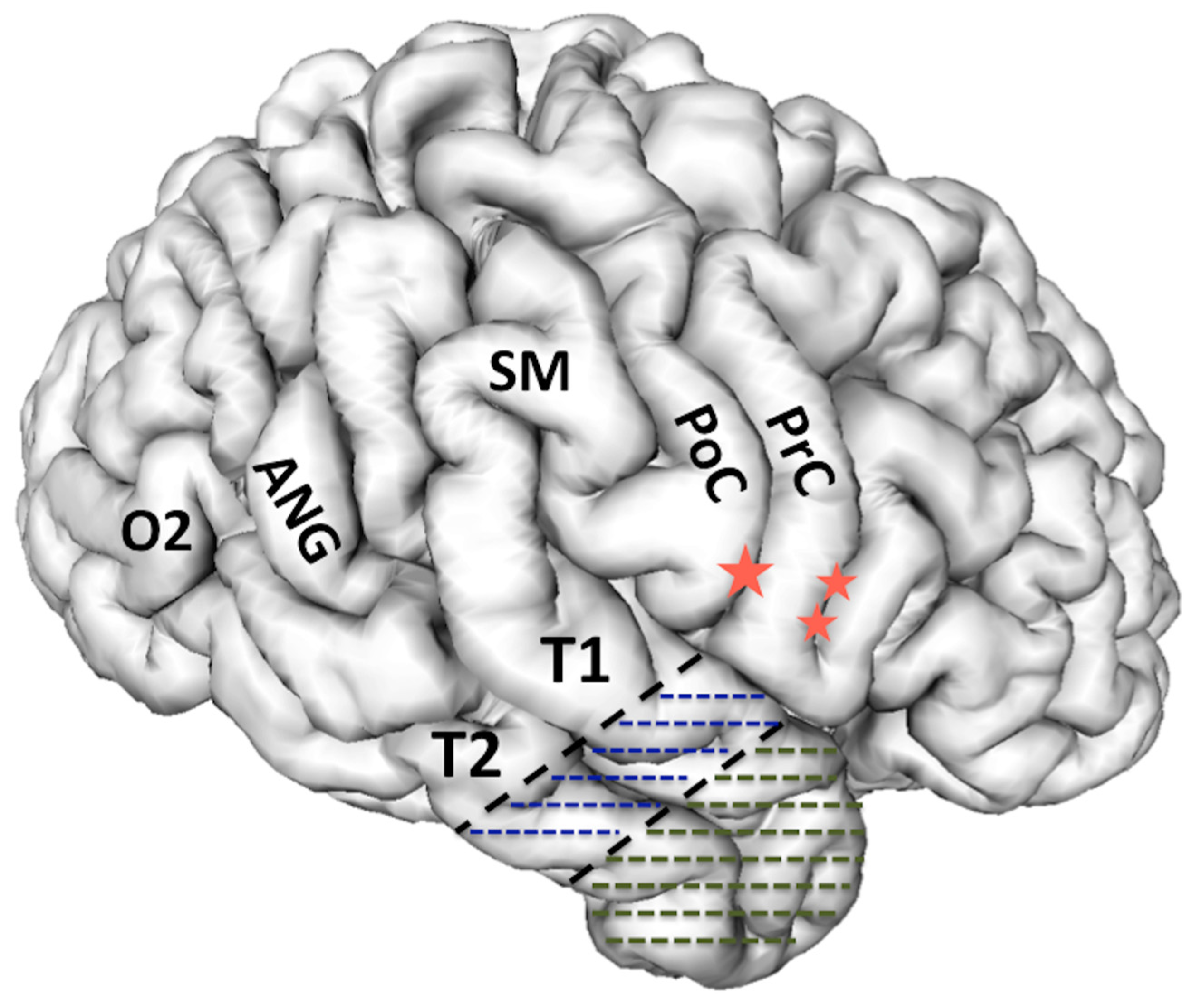
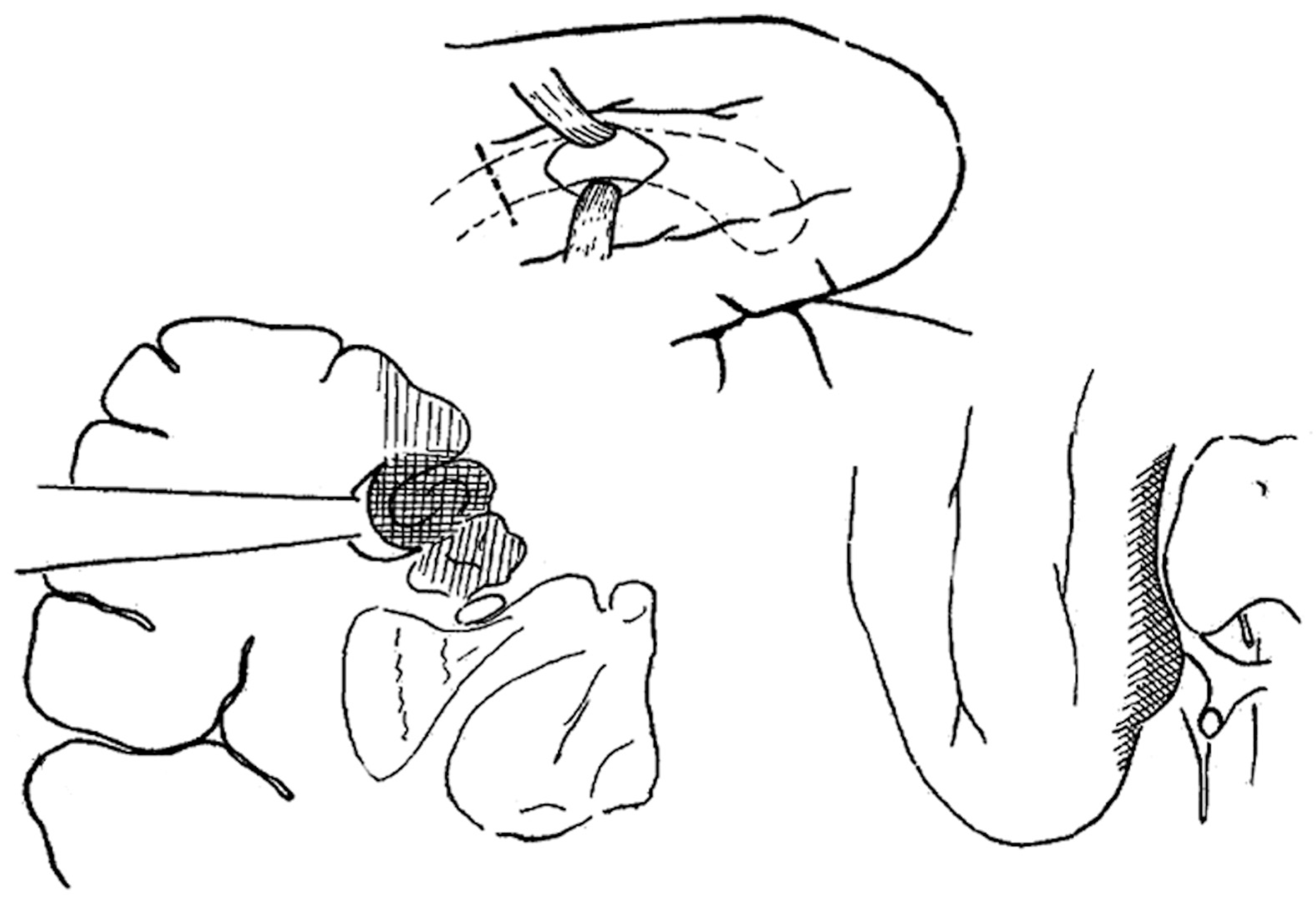
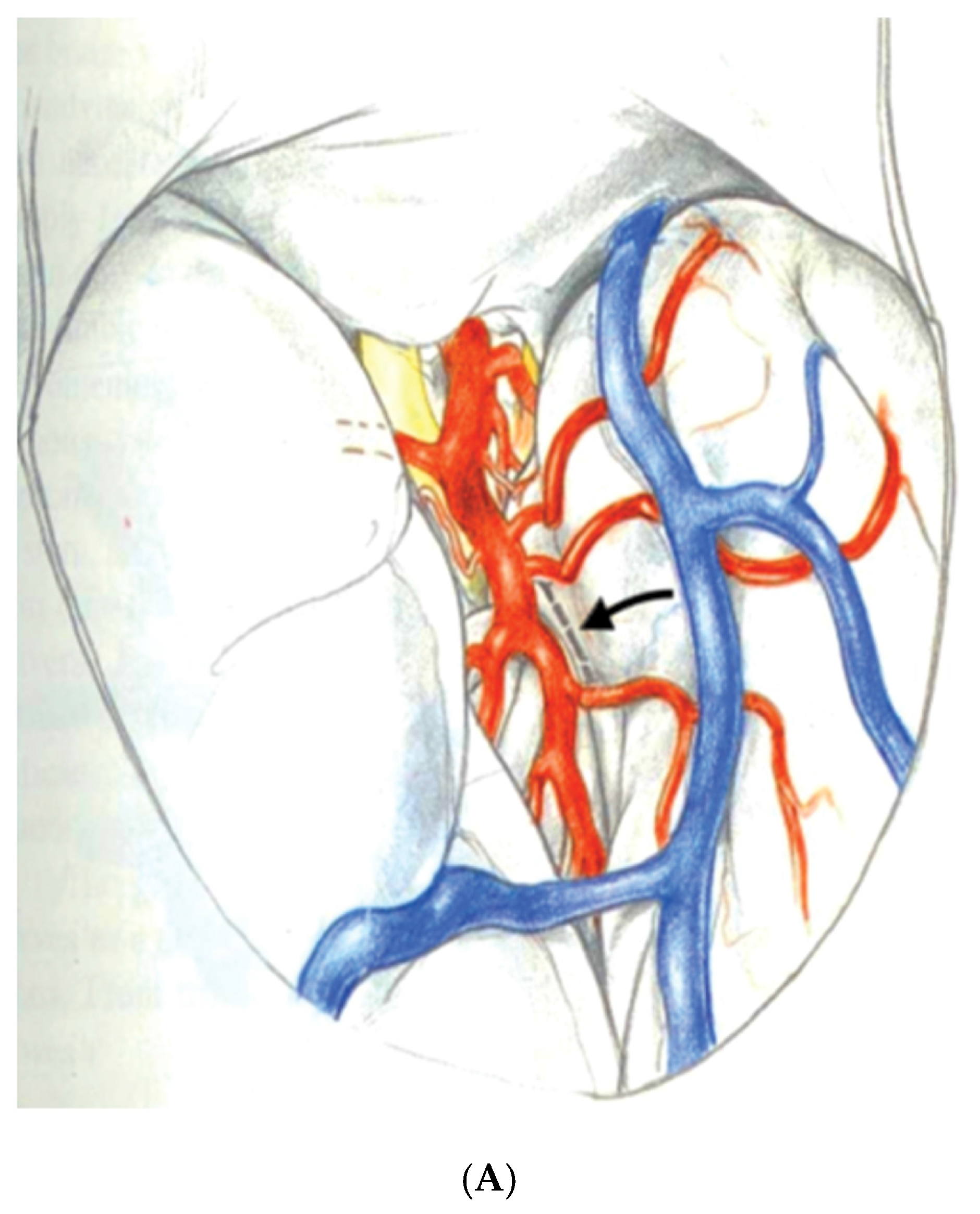

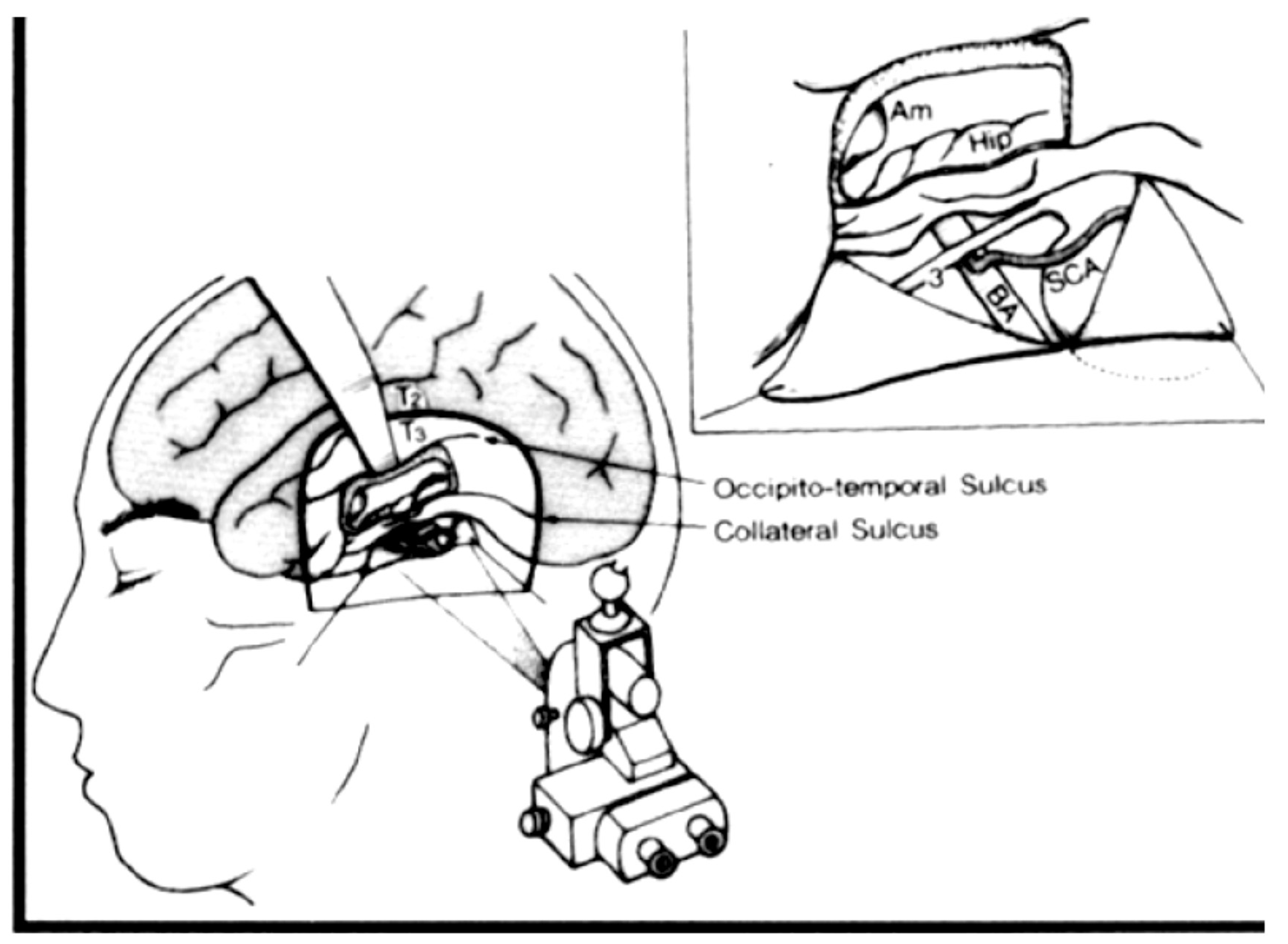
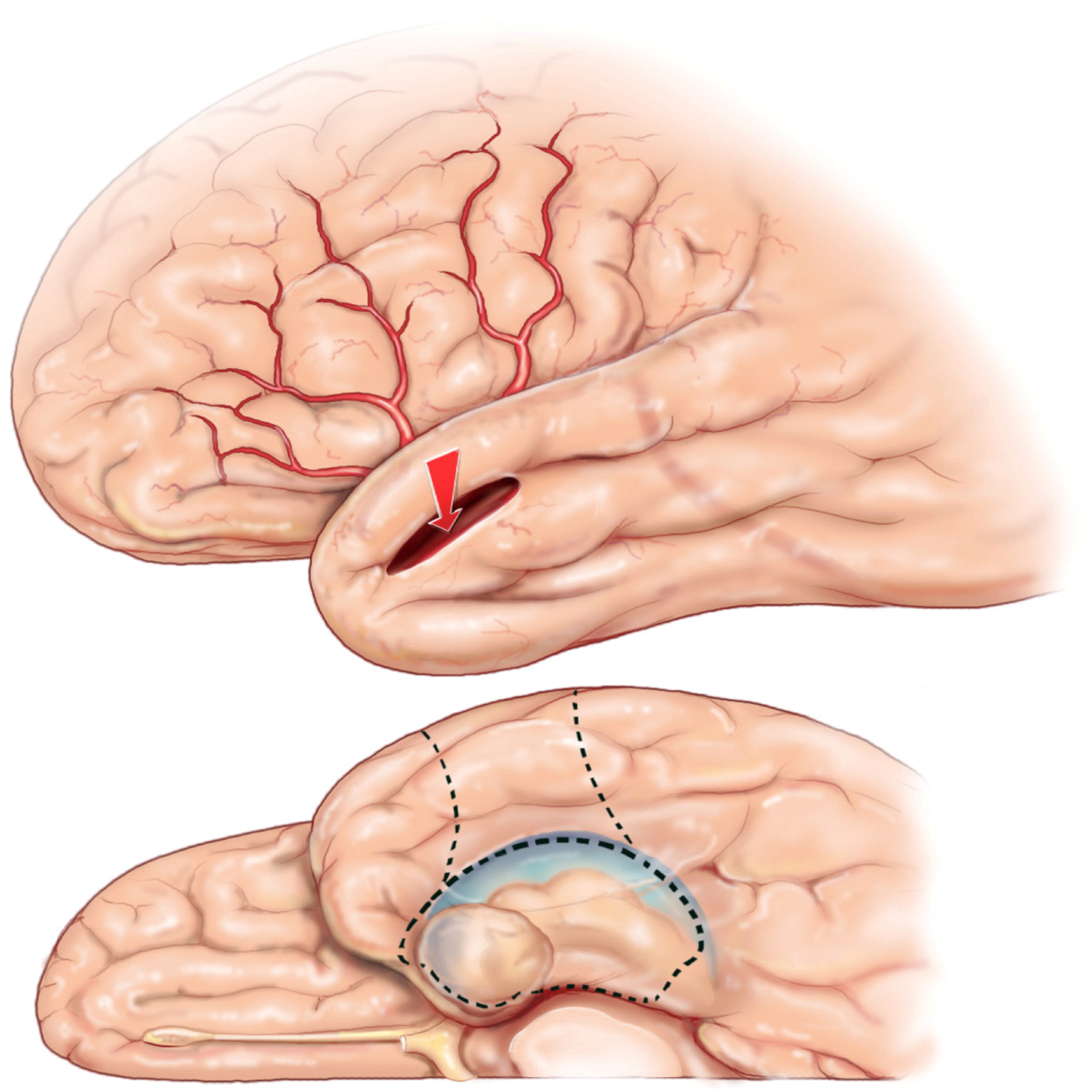
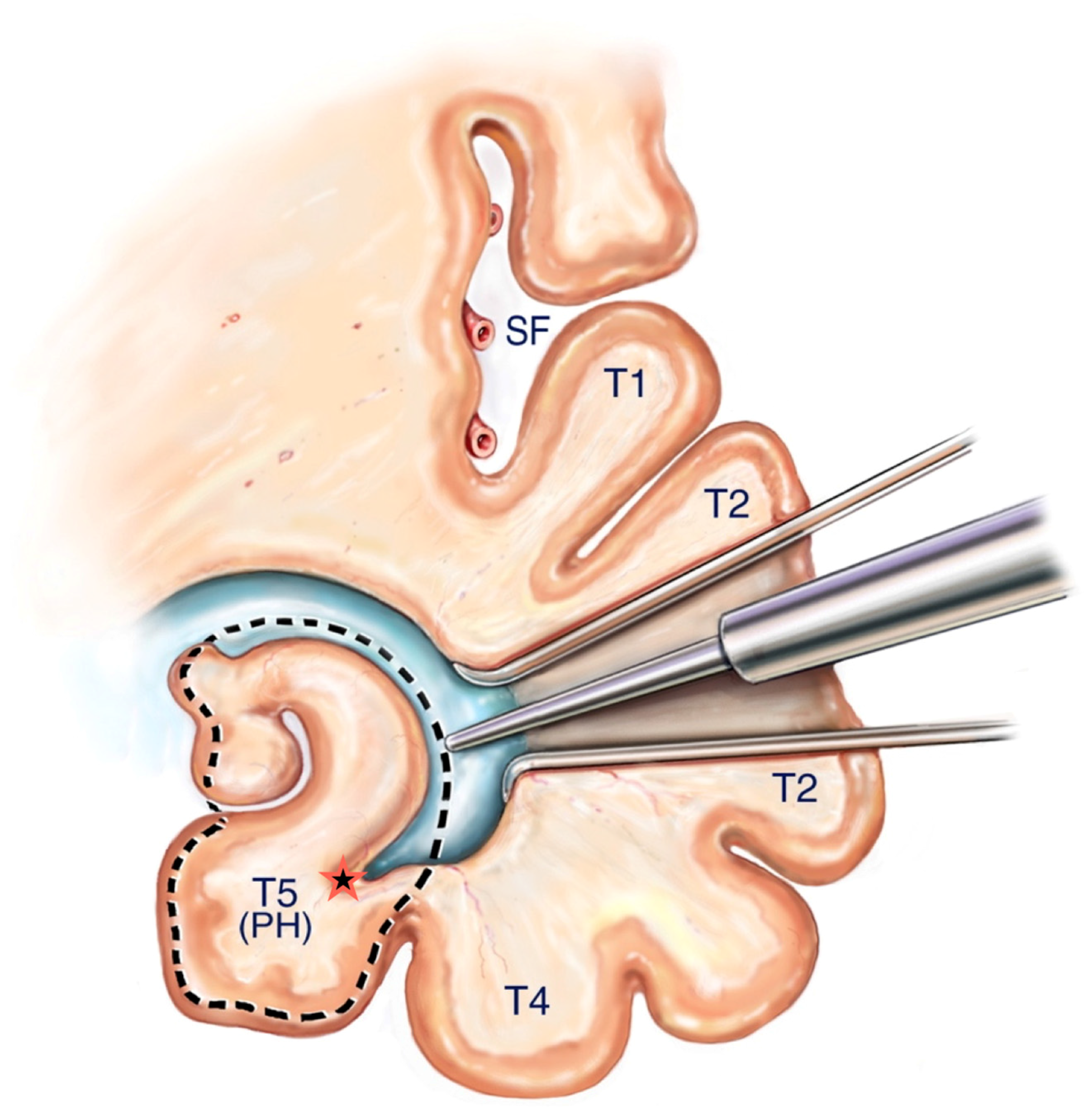
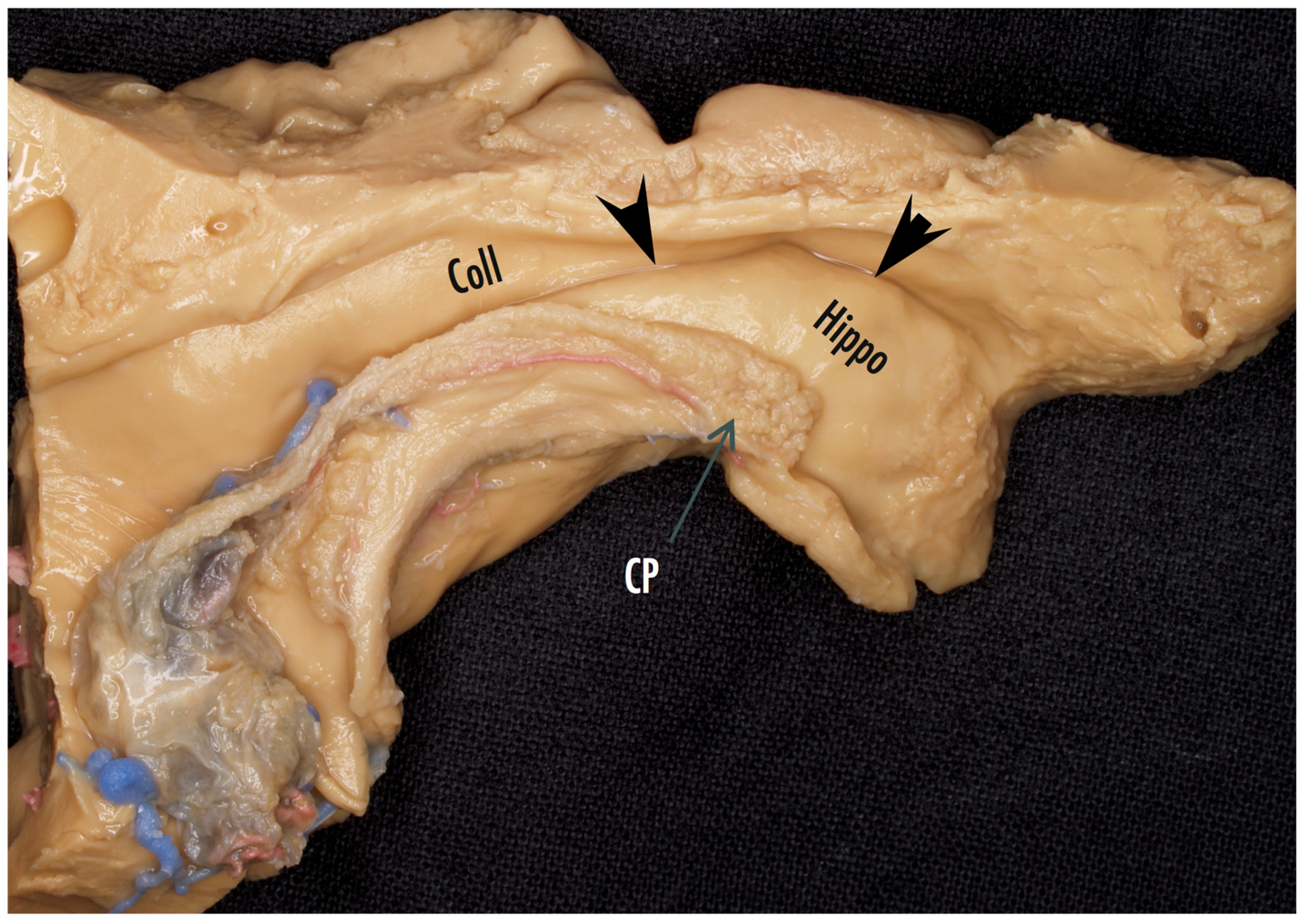
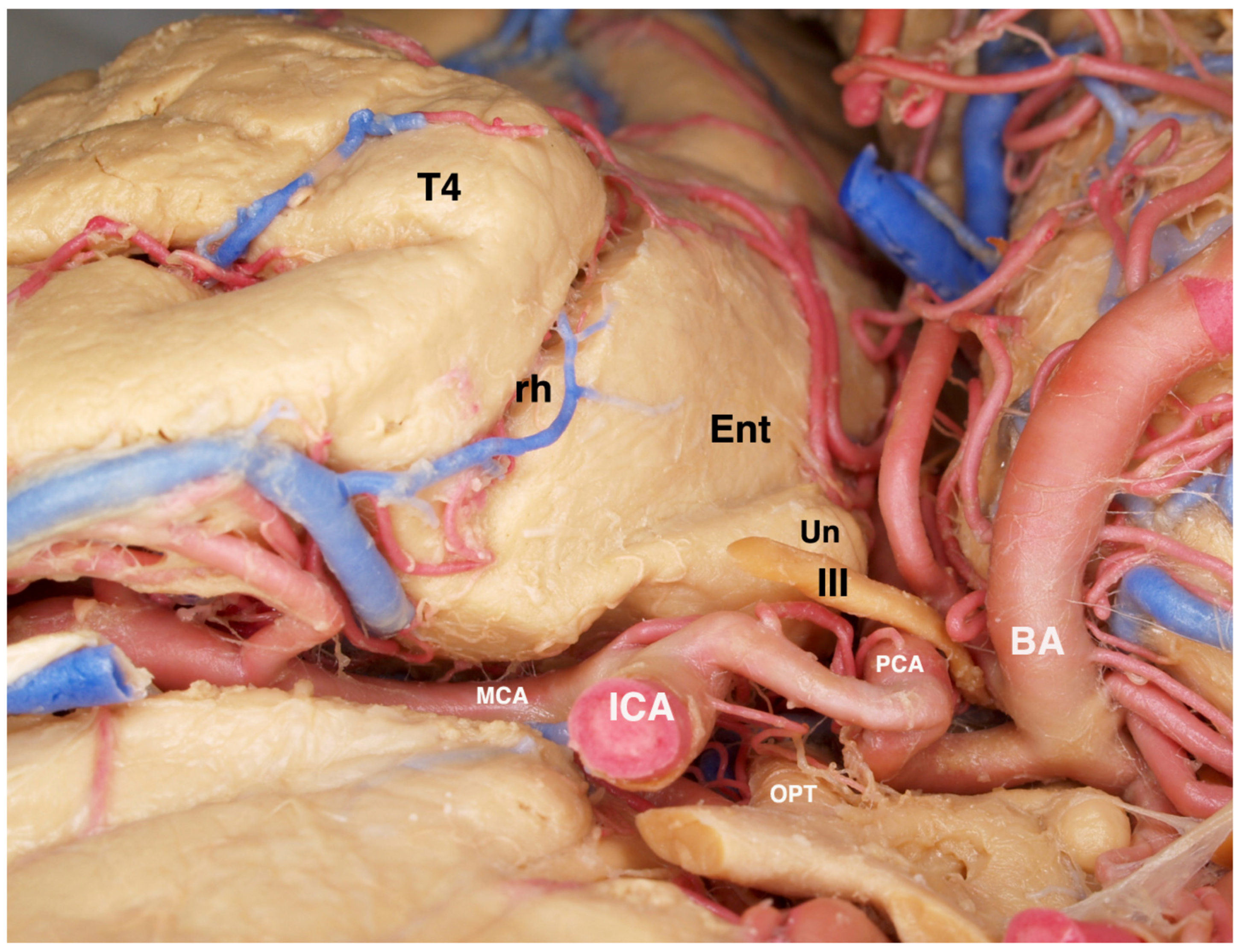
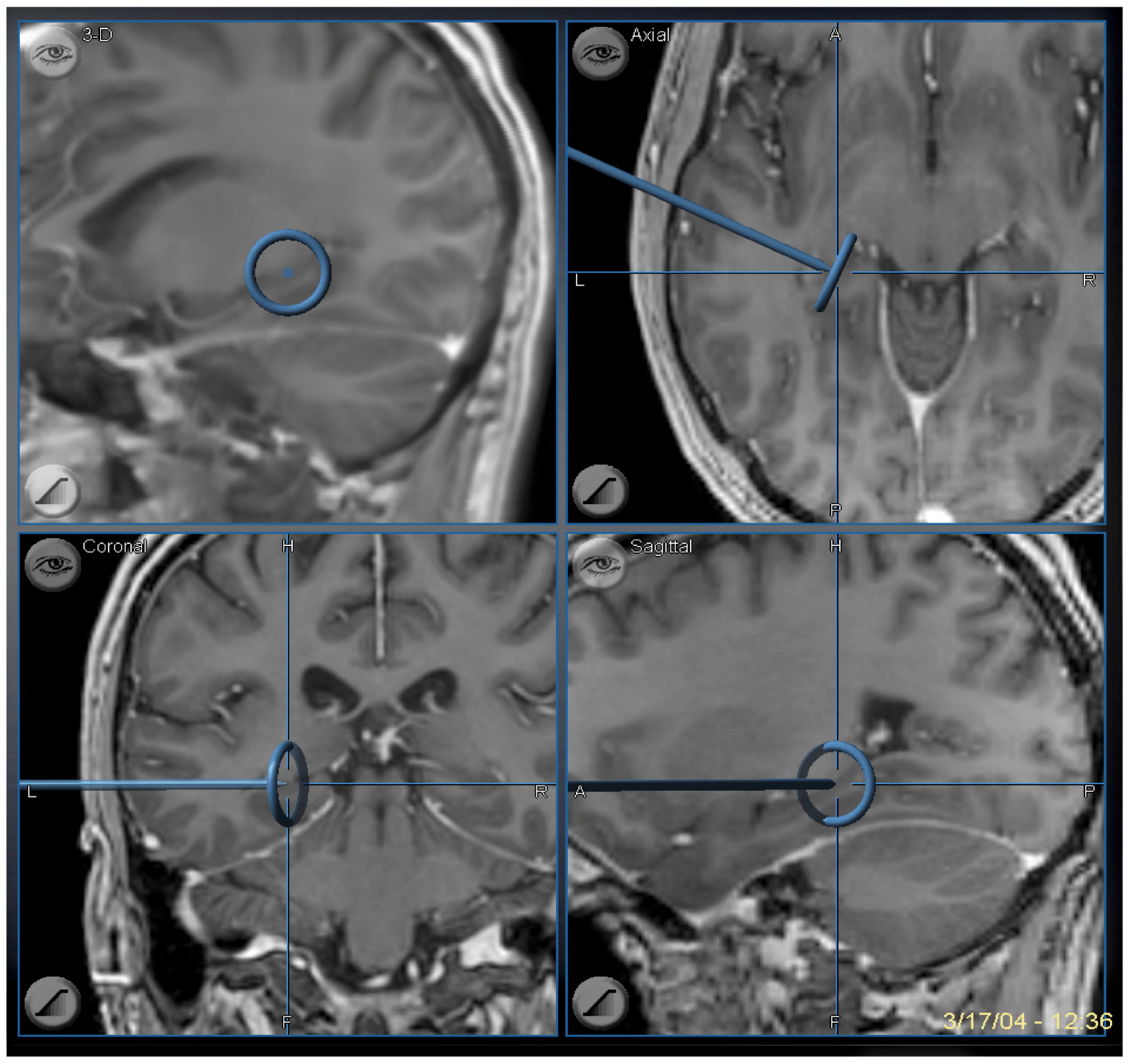
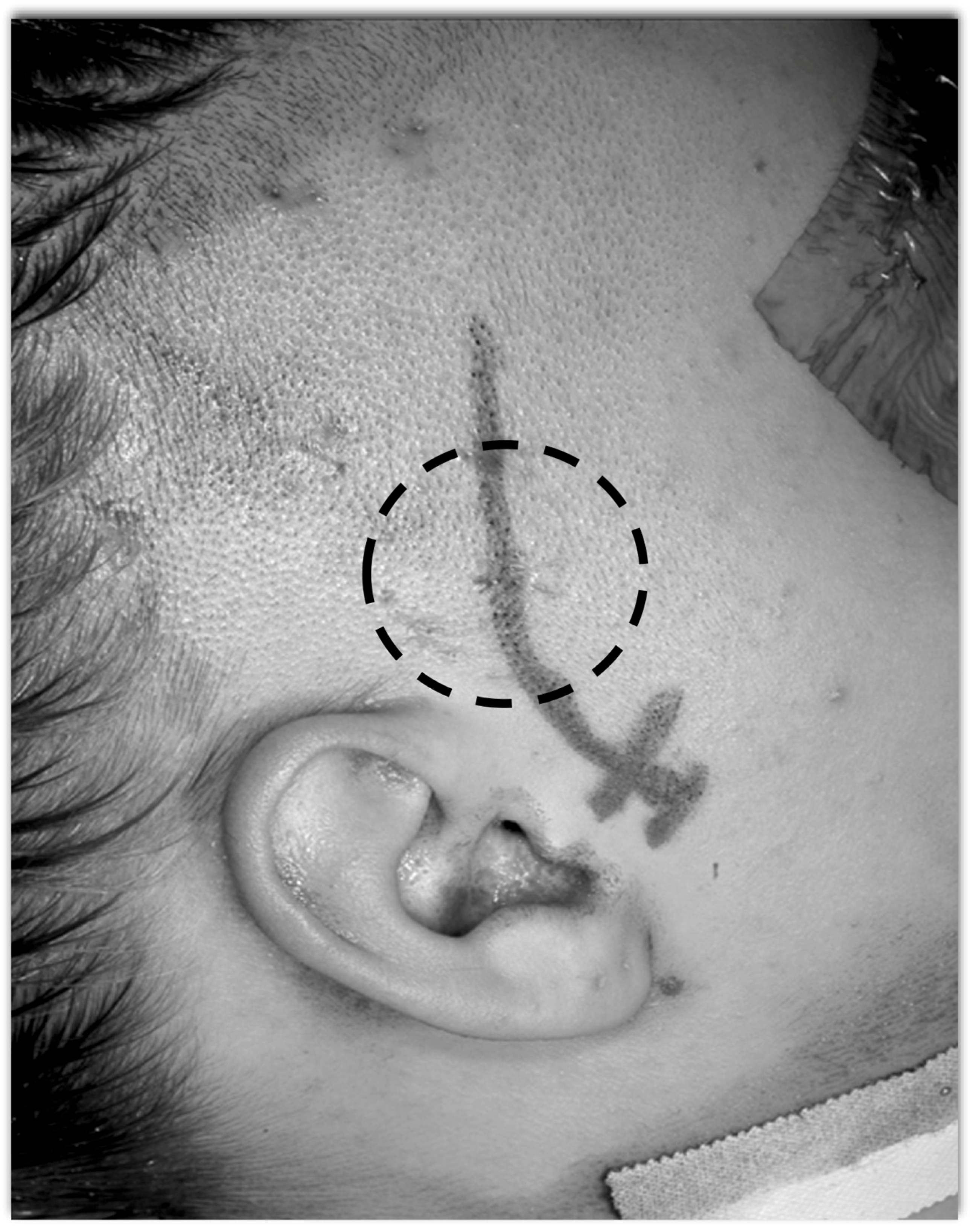
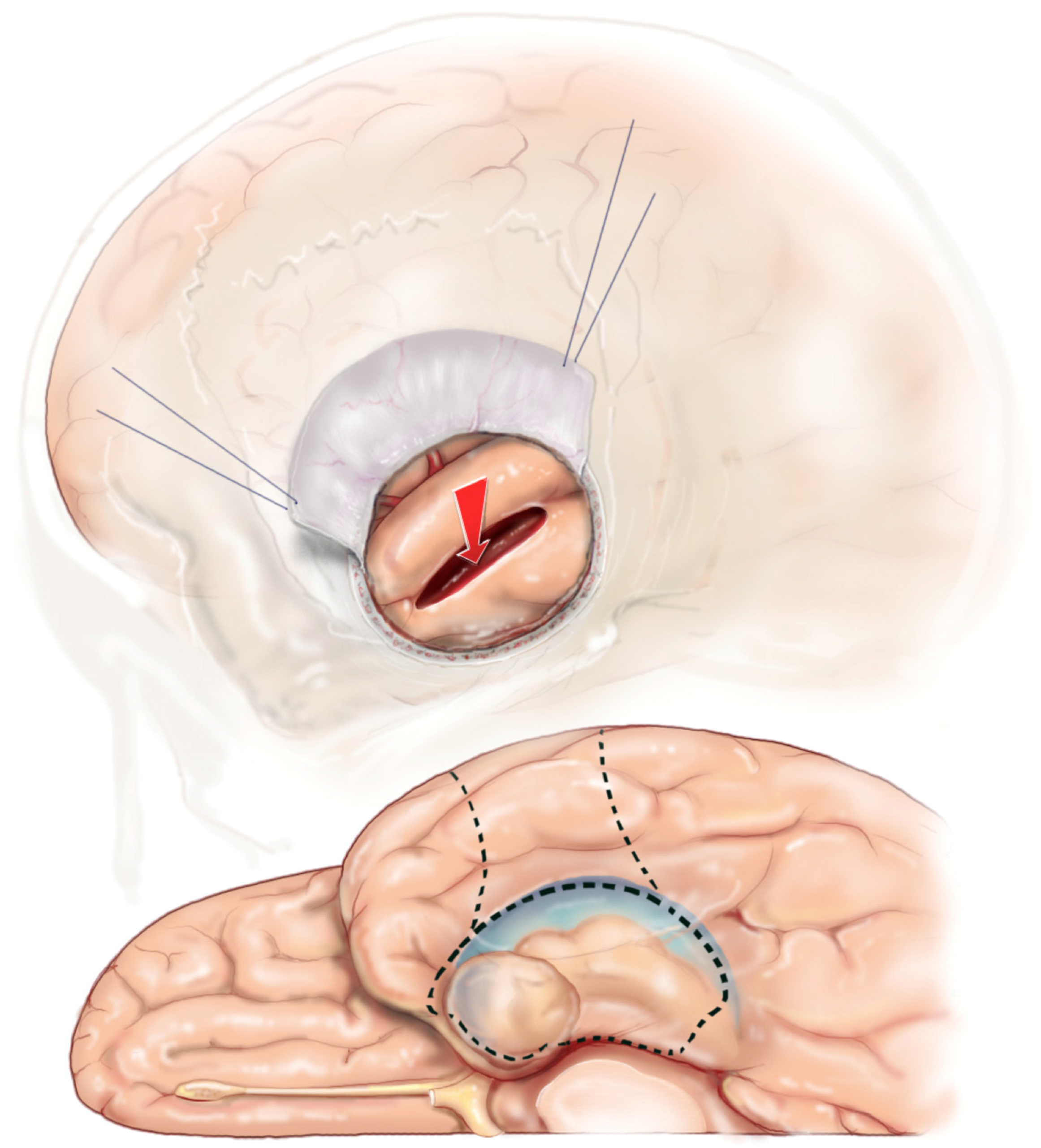
| Renowden et al. (1995) [80] | Same outcome for two types of SAH |
| Arruda et al. (1996) [81] | Similar |
| Pauli et al. (1999) [82] | Similar |
| Clusmann et al. (2002) [83] | Similar |
| Clusmann et al. (2004) [40] | Better in ATL in children + adolescents |
| Lutz et al. (2004) [40] | Same outcome for two types of SAH |
| Paglioli et al. (2006) [84] | Similar |
| Tanriverdi, et al. (2007) [85] | Similar |
| Bate et al. (2007) [86] | Better in ATL in children + adolescents |
| Tanriverdi, et al. (2010) [87] | Similar |
| Sagher, et al. (2012) [78] | Similar |
| Wendling, et al. (2013) [88] | Similar |
| Bujarski, et al. (2013) [89] | Similar |
| Josephson, et al. (2013) [90] | Better outcome in ATL |
| Hu, et al. (2013) [91] | Better outcome in ATL |
| Nascimento, et al. (2016) [92] | Similar although ATL associated with more complications |
| Schmeiser, et al. (2017) [93] | No difference in three types of SAH nor in SAH versus ATL |
| Foged, et al. (2018) [94] | No difference at 1 year and 7 years after surgery |
| Goldstein, et al. (1992) [95] | No difference when using global memory test |
| Goldstein, et al. (1993) [96] | SAH short-term beneficial effect on memory |
| Wolf et al. (1993) [97] | No difference |
| Renowden et al. (1995) [80] | SAH better in verbal IQ and nonverbal memory |
| Helmstaedter et al. (1996) [98] | Immediate recall better in SAH |
| Jones-Gotman (1997) [42] | Similar deficits in learning + retention tasks in seizure free patients |
| Pauli et al. (1999) [82] | SAH better for verbal memory |
| Helmstaedter et al. (2002) [99] | SAH has advantage over ATL in long-term follow-up (2–10 years) |
| Clusmann (2004) [40] | SAH in adults: higher rate of improvement + lower rate of deterioration in overall neuropsychological score |
| Hader et al. (2005) [100] | No difference |
| Morino et al. (2006) [101] | SAH better memory function |
| Paglioli et al. (2006) [84] | SAH better for verbal memory score (30% deterioration in both groups) |
| Tanriverdi, et al. (2007) [85] | SAH less decline for verbal memory |
| Helmstaedter et al. (2008) [102] | SAH better for R-sided resection, ATL better for L-sided resection for material-specific memory |
| Tanriverdi, et al. (2010) [87] | Worse verbal IQ after SAH |
| Sagher, et al. (2012) [78] | No difference |
| Bujarski, et al. (2013) [89] | No difference, except more post-surgical paranoia after ATL |
| Wendling, et al. (2013) [88] | Worse memory after ATL |
| Boucher, et al. (2015) [103] | Worse after ATL on immediate recall of Logical Memory subtest of Wechsler Memory Scales. Delayed recognition trial of Rey Auditory Verbal Learning Test worse after SAH |
| Nascimento, et al. (2016) [92] | No difference |
| Gül, et al. (2017) [104] | No difference |
| Schmeiser, et al. (2017) [93] | No difference |
| Foged, et al. (2018) [94] | SAH better than ATL verbal memory in left hemisphere surgery only |
© 2018 by the author. Licensee MDPI, Basel, Switzerland. This article is an open access article distributed under the terms and conditions of the Creative Commons Attribution (CC BY) license (http://creativecommons.org/licenses/by/4.0/).
Share and Cite
Boling, W.W. Surgical Considerations of Intractable Mesial Temporal Lobe Epilepsy. Brain Sci. 2018, 8, 35. https://doi.org/10.3390/brainsci8020035
Boling WW. Surgical Considerations of Intractable Mesial Temporal Lobe Epilepsy. Brain Sciences. 2018; 8(2):35. https://doi.org/10.3390/brainsci8020035
Chicago/Turabian StyleBoling, Warren W. 2018. "Surgical Considerations of Intractable Mesial Temporal Lobe Epilepsy" Brain Sciences 8, no. 2: 35. https://doi.org/10.3390/brainsci8020035




